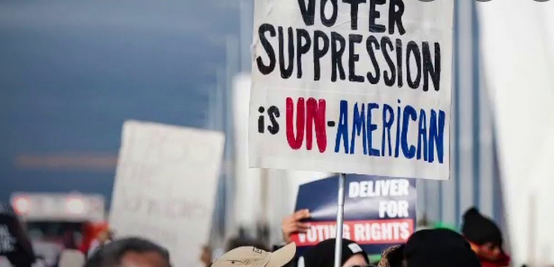Photos: YouTube
Since the beginning of 2021, dozens of states have enacted restrictive voting laws — legislation that limits how, where, and when voters can cast a ballot.
During the first two years of the pandemic, states expanded voting options, ushering in unprecedented access to the ballot via 24-hour voting, drive-through voting, mail-in ballots, ballot drop boxes, and other measures. But following Donald Trump’s defeat in 2020, the myth of voter fraud and a stolen election quickly spread. By May of 2022, nearly 400 restrictive bills had been introduced in legislatures nationwide.
In 2021, legislators in every state except Vermont introduced at least one provision restricting voting access, according to data from the Brennan Center for Justice, which tracks the legislation. Ultimately, by May 2022, 18 states had passed a total of 34 laws restricting voting.
An analysis by the Brennan Center’s voting rights program found that race and racial resentment, not only partisanship, play a part in the proliferation of these laws: legislative districts that scored higher on markers of racial resentment were more likely to be represented by legislators who introduced the restrictions. They were also more likely to be introduced by legislators from majority-white districts in diversifying states. Read more: https://www.vox.com/policy-and-politics/2022/9/19/23356904/voter-suppression-midterm-elections












